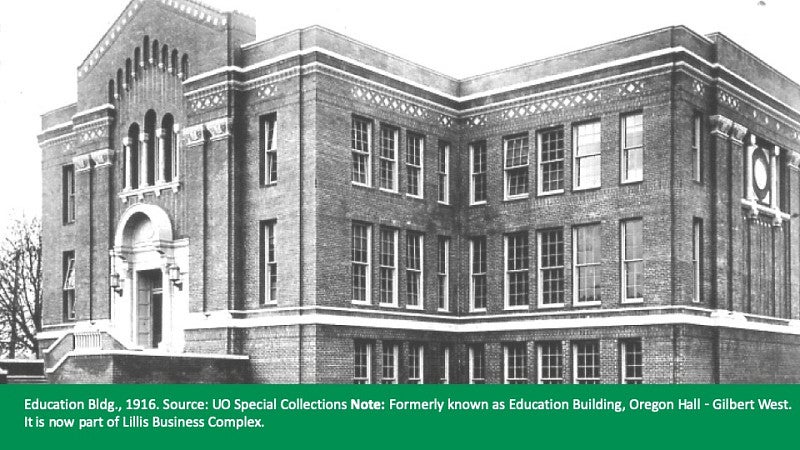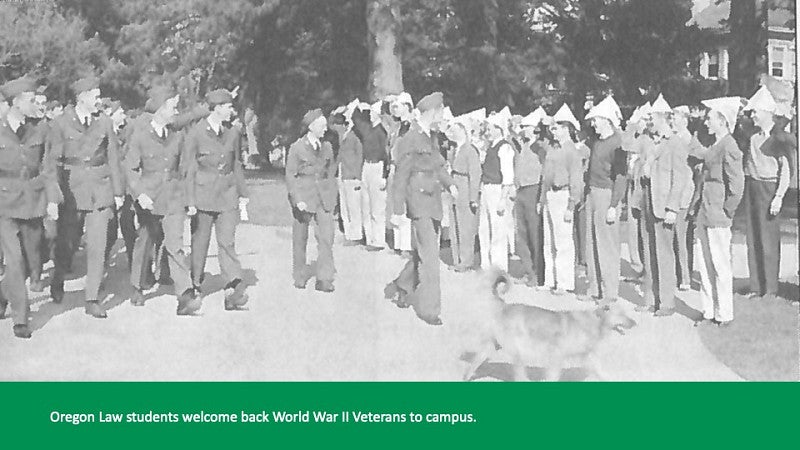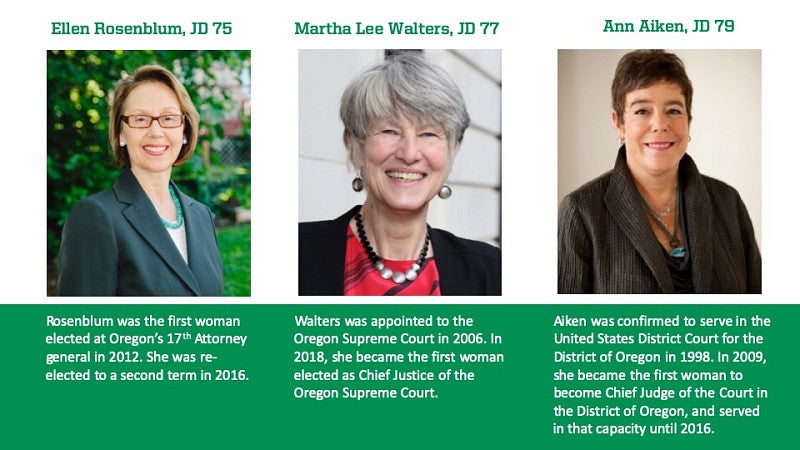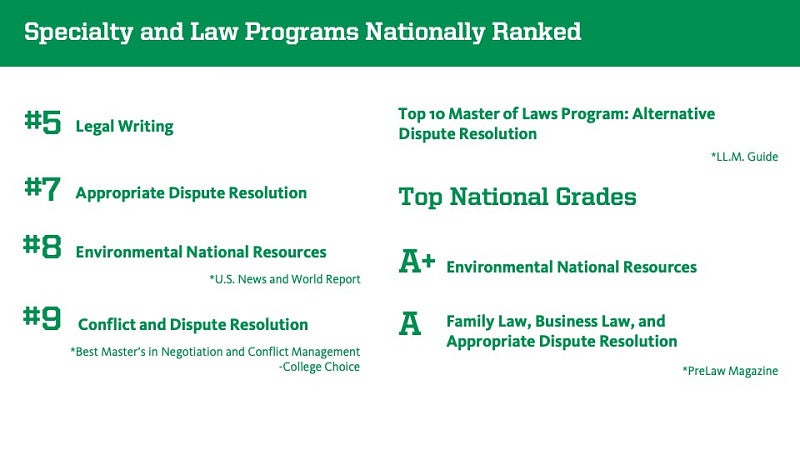Since its founding on October 10, 1884, the University of Oregon School of Law and its faculty and helped shape the foundational laws of the state and the region for 135 years.
When most lawyers received their legal education by “reading law” while working in lawyer’s offices over a century ago, Oregon Law, the “hope and pride of the state," was the first and remains the only public law school in the State of Oregon.
Today the school of law remains the only public law school, and has educated lawyers, judges, and civic and business leaders since its inception. Oregon Law’s faculty and students stretch their reach around the world. Here are highlights celebrating the school’s history and legal legacy.
A brief history of the school of law
Special Note: Due to the robust history of Oregon Law, the following highlights are not comprehensive and do not include every milestone accomplished by its faculty, staff, students and alumni.
1884 - 1919
The University of Oregon “law department” opened in rented offices at 2nd and Yamhill in Portland. Richard Hopewood Thornton, a local lawyer, was the sole professor and later, dean. The students were mainly law office clerks, teachers, bankers, retailers, and government employees, eager to get ahead in the wealthy city studying at night. At the time, Portland was booming and there was a demand for lawyers to advise on business transactions.
The Class of 1896 saw its first woman law graduate, Anna E. Wood, LLB, and first Asian-American graduate, Mitsudoro Yamanak, LLB.
In 1916, the law school moved to the third floor of the then-Education Building. At the time, the University of Oregon was already offering some law classes on the main campus, but Eugene students petitioned to transform the old-style to the new standards which were being set in the country for legal education. These included stronger entrance requirements, a three-year curriculum, a full-time faculty, a better library, and a university environment. The school was recognized as a full-time day school and students began to matriculate after two years of college, rather than directly after high school.
1920 - 1939
In 1921, The Oregon Law Review was established, making it the first in the state and one of the first law reviews in the Pacific Northwest. During this time, the law school became accredited by the American Bar Association and started a chapter of the prestigious national law school honor society, the Order of the Coif.
In 1938, the law school moved into the University Library building, which was renamed Fenton Hall in honor of judge William David Fenton, an early UO benefactor. Fenton donated 8,000 law books as a memorial to his son, Kenneth Lucas Fenton.

1940 - 1959
During the war years, many law students were called to service. After the war's conclusion, the school admitted every returning veteran who sought a legal education. Out of 26 students who graduated in 1948, 25 had served in World War II.
The post-war era was marked by the Oregon state legislature's adoption of Professor Kenneth O'Connell's Oregon Revised Statutes. This bolstered the law school's status in the state for its strength in public law and policy.

1960 - 1979
During the 1960's Oregon Law began to establish its national reputation. The first courses in environmental and natural resources (ENR) law were offered, and the Ocean and Coastal Law Center - one of the first in the nation - was founded.
In the 70's, the law school moved from Fenton Hall into the new "Law Center." It was during this time that the law school held its first commencement ceremony separate from the rest of campus and switched to the semester system. The Legal Research and Writing (LRW) Program was established by Professor Mary Lawrence. It was one of the first LRW programs in the nation to employ full-time instructors who were law graduates, and has served as a nationwide model. For the first time in its history, the Oregon Supreme Court was hosted in Eugene by the law school. Pioneering alumni include William “Grey Wolf” Johnson JD '75, the first member of the Confederated Tribes of the Umatilla Indian Reservation to graduate and Ellen Rosenblum JD '75, Martha Lee Walters JD '77 and Ann Aiken JD '79.

1980 - 1999
The law school hired its first African-American dean with Derrick Bell. His deanship was from 1981 to 1985. During his time at the school, his commitment to civil rights, race and law intersections were essential to ushering in a new era at Oregon Law.
In 1997, Rennard Strickland became the first dean of Osage and Cherokee heritage and served until 2002. A leading authority on Native American Law, to this day, he is considered a pioneer in introducing Indian law into university curriculum. After the largest building campaign in the history of the law school, the William W. Knight Law Center became the new home of Oregon Law. A naming gift from Phil Knight honored his father, William W. Knight LLB '32.

2000 - present day
In the last 20 years, the school has continued its strong legal legacy with the creation of new and innovative programs and clinics. The Appropriate Dispute Resolution program began in 2000 and the Domestic Violence Clinic – one of the first in the nation – was established in 2002. The school also established the ENR Program, Small Business Clinic, the Conflict and Dispute Resolution Master’s Program, Master of Laws, the Undergraduate Legal Studies Minor, and expanded its reach through the Portland Program. In 2006, Margaret "Margie" Paris became the first woman to be named dean at Oregon Law. Her tenure was through 2011.

After 135 years of excellence, the school remains committed to public service and being the “hope and pride of the state.” Today, it is the #1 law school in Oregon and #2 in the Pacific Northwest for public law schools as ranked by US News and World Report.
By Rayna Jackson, School of Law Communications
